Limonada Tem Vitamina C
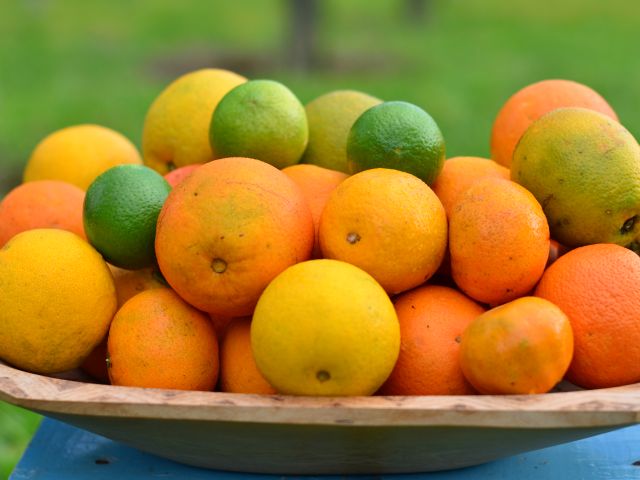
O costume de oferecer chá com limão quando alguém manifesta sintomas de gripe vai muito além do gesto de carinho. A vitamina C, ou ácido ascórbico, presente no limão, é comprovadamente importante na resposta imunológica do organismo. "Ela está relacionada aos mecanismos de resistência a infecções e aos processos de reação inflamatória e de reações alérgicas, além de proteger a função pulmonar", explica a nutricionista Lilian Mortari Castelani, extensionista da Epagri no município de São Carlos.
"Estudos relacionam o consumo de doses corretas de vitamina C ao tratamento de gripes e resfriados com resultados positivos com relação ao desenvolvimento de sintomas menos intensos e menor duração da doença", reforça. A vitamina C também tem a capacidade de aumentar a absorção de ferro. Isso explica o fato de servir laranja com feijoada, pois o feijão é rico em ferro de baixa absorção, que é compensada pela vitamina C na mesma refeição. Essa vitamina ainda está relacionada à síntese de colágeno e a processos de cicatrização.
Frutas da época
A natureza dá uma forcinha para garantir esse nutriente nas refeições. "É no outono e no inverno que estão disponíveis nos pomares excelentes fontes de vitamina C, basicamente as frutas cítricas: laranja, limão, bergamota e tangerina, de uma infinidade de sabores e espécies", diz a nutricionista. Outras frutas que fornecem boas quantidades são acerola, goiaba, morango, abacaxi, mamão, manga, maracujá e kiwi. E ainda é possível garantir o aporte da vitamina consumindo repolho, tomate, rúcula, brócolis, pimentão e couve-folha.
A orientação é dar preferência às fontes naturais e evitar os suplementos sintéticos. A recomendação diária de vitamina C para varia de 60 a 90mg para adultos, ficando, em média, em 75mg para mulheres e 90mg para homens. Para crianças, a ingestão recomendada é de uma média de 30mg ao dia. Gestantes, lactantes, fumantes ou pessoas com doenças associadas têm recomendações diferenciadas.
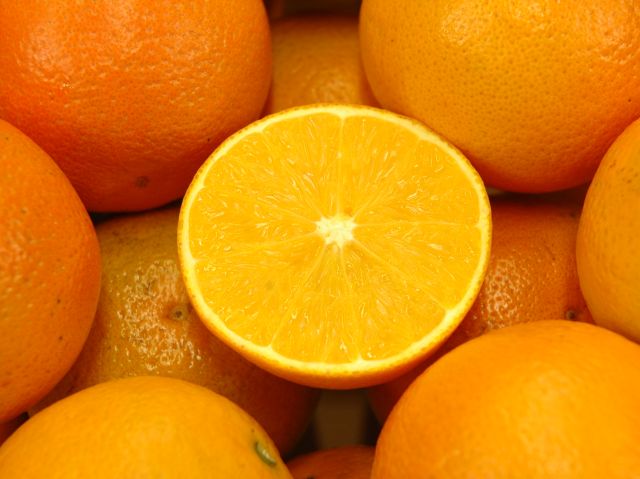
Como consumir
Uma a duas porções de frutas cítricas como, por exemplo, uma laranja bahia média (120g) ao dia, pode garantir o aporte mínimo da vitamina. Um copo de suco de limão e um prato de sobremesa de salada de rúcula com tomate ajudam a completar a necessidade.
Frutas e hortaliças frescas e cruas são sempre as melhores opções porque a vitamina C é sensível ao processamento com calor e à exposição ao ar. "Os sucos comuns, como o de laranja, depois de prontos, perdem a vitamina C em algumas horas, então a ordem é preparar e consumir o quanto antes", diz Lilian. Ela aconselha que se opte por frutos maduros, íntegros e preferencialmente produzidos de forma orgânica.
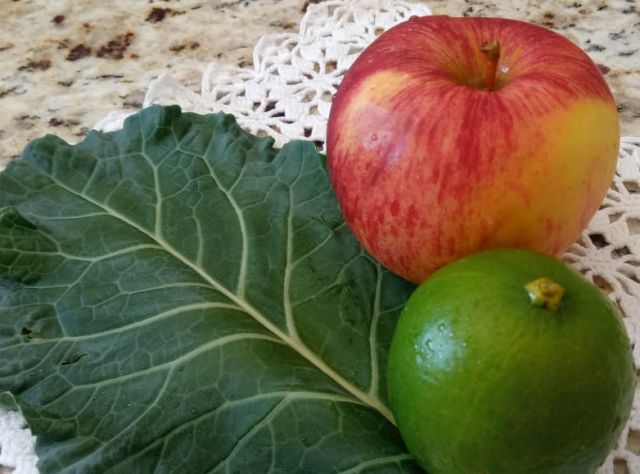
Frutas cítricas em SC
A produção de frutas cítricas está distribuída por quase todas as regiões de Santa Catarina. "A citricultura conta com cerca de 1,3 mil produtores no Estado, com mais de 1,5 mil hectares, e participa com 26,8 mil toneladas de produção, gerando R$15,1 milhões do valor bruto da produção (VBP)", informa Rogério Goulart Junior, economista do Centro de Socioeconomia e Planejamento Agrícola (Epagri/Cepa). A maior parte da produção é de laranja, cujo cultivo está concentrado no Oeste e no Sul Catarinense, seguida da tangerina, com pomares na Grande Florianópolis, no Oeste, no Norte e no Vale do Itajaí. Para conhecer agricultores catarinenses que fazem delivery de produtos na sua região, clique aqui.
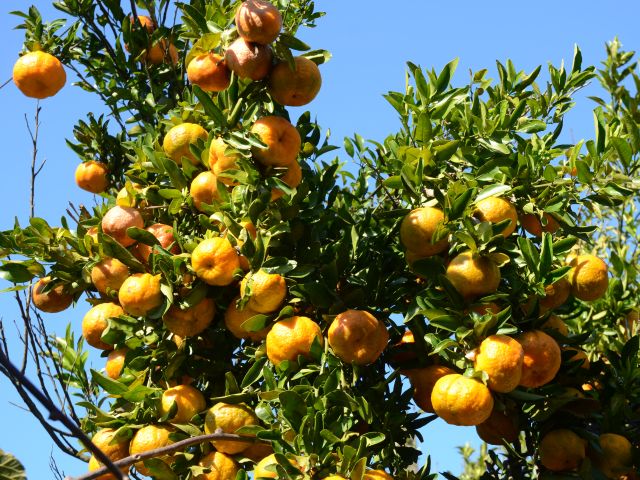
Busque o equilíbrio
Para manter o organismo em equilíbrio e mais resistente a doenças, a vitamina C deve estar inserida em uma alimentação variada. "Vale ressaltar que tanto a vitamina C quanto outras vitaminas e minerais (vitamina D, A, E, zinco, ferro e selênio) são antioxidantes, ou seja, protegem contra danos às células, garantindo que o corpo mantenha o seu complexo conjunto de defesa que chamamos de imunidade", reforça a nutricionista. Por isso, os guias alimentares indicam a ingestão de 3 a 5 porções de frutas e hortaliças diariamente, o que garante um aporte diversificado de vitaminas e minerais.
Para colocar a vitamina C no cardápio de forma fácil e saborosa, Lilian compartilha três receitas de sucos que garantem uma boa hidratação e são um apoio para a imunidade. Confira:
SUCO DE LARANJA, CENOURA E GENGIBRE
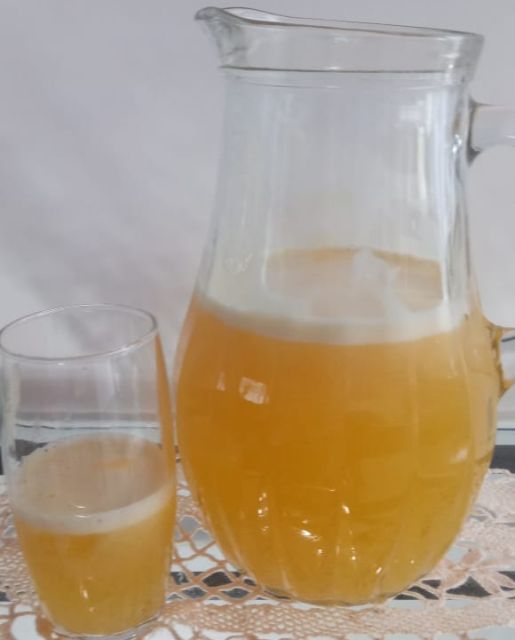
Ingredientes: 2 laranjas para suco, 2 rodelas de cenoura e 1 fatia fina de gengibre
Preparo: Descasque e retire as sementes da laranja, pique-a e bata no liquidificador com a cenoura, o gengibre e 1 litro de água. Coe e adoce o suficiente.
Palavra da nutricionista: "Esse suco contém a vitamina C da laranja, a vitamina A da cenoura e as propriedades anti-inflamatórias do gengibre".
SUCO DE LIMÃO, MAÇÃ E COUVE
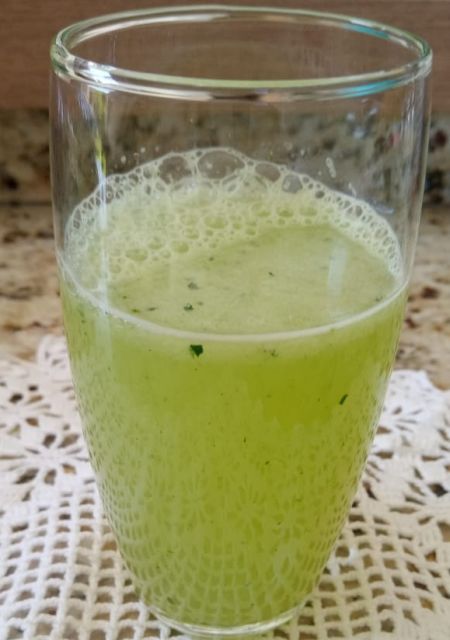
Ingredientes: 1 limão taiti, 1 maçã e ½ folha de couve
Preparo: Lave bem as frutas e retire a parte branca central do limão e da maçã. Pique as duas frutas com casca e leve tudo ao liquidificador com a couve e 1,5 litro de água. Coe e adoce o suficiente.
Palavra da nutricionista: "Esse suco reúne o limão e a couve que são fontes de vitamina C, além da maçã que tem boa fonte de fibra e equilibra a acidez do suco".
SUCO DE ACEROLA COM HORTELÃ
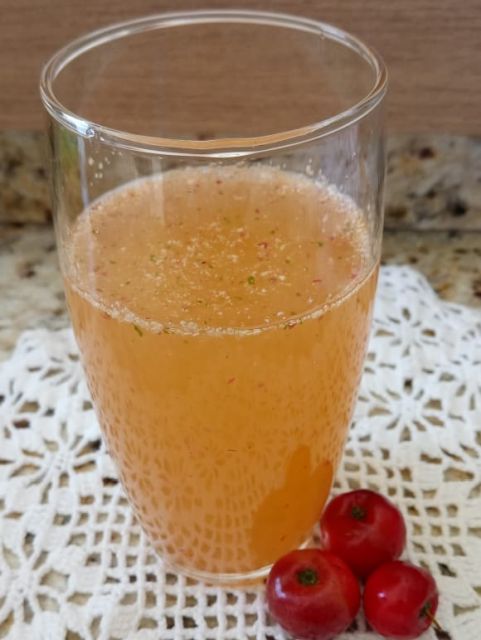
Ingredientes: 1 xícara de acerola e 1 galho de hortelã
Preparo: Bata a acerola inteira com a hortelã com 1 litro de água no liquidificador, coe e adoce a gosto.
Palavra da nutricionista: "Esse suco tem muita vitamina C, além das propriedades antigripais da hortelã".
Conheça os teores médios de vitamina C de alguns alimentos:
| Alimento (100g) | Vitamina C (mg) |
| Abacaxi | 34,6 |
| Acerola | 941,4 |
| Bergamota | 112 |
| Couve manteiga | 96,7 |
| Goiaba vermelha | 80,6 |
| Laranja bahia | 56,9 |
| Laranja valência | 47,8 |
| Limão cravo | 32,8 |
| Limão tahiti | 38,2 |
| Maracujá | 19,8 |
| Morango | 63,6 |
| Pimentão verde | 100,2 |
| Repolho | 18,7 |
| Repolho roxo | 43,2 |
| Rúcula | 46,3 |
| Tangerina ponkan | 48,8 |
| Tomate | 21,2 |
Mais informações para a imprensa: Lilian Mortari Castelani, extensionista da Epagri em São Carlos: liliancastelani@epagri.sc.gov.br / (49)3462-4082
Source: https://www.epagri.sc.gov.br/index.php/2020/05/12/saiba-como-usar-a-vitamina-c-a-favor-da-imunidade/




